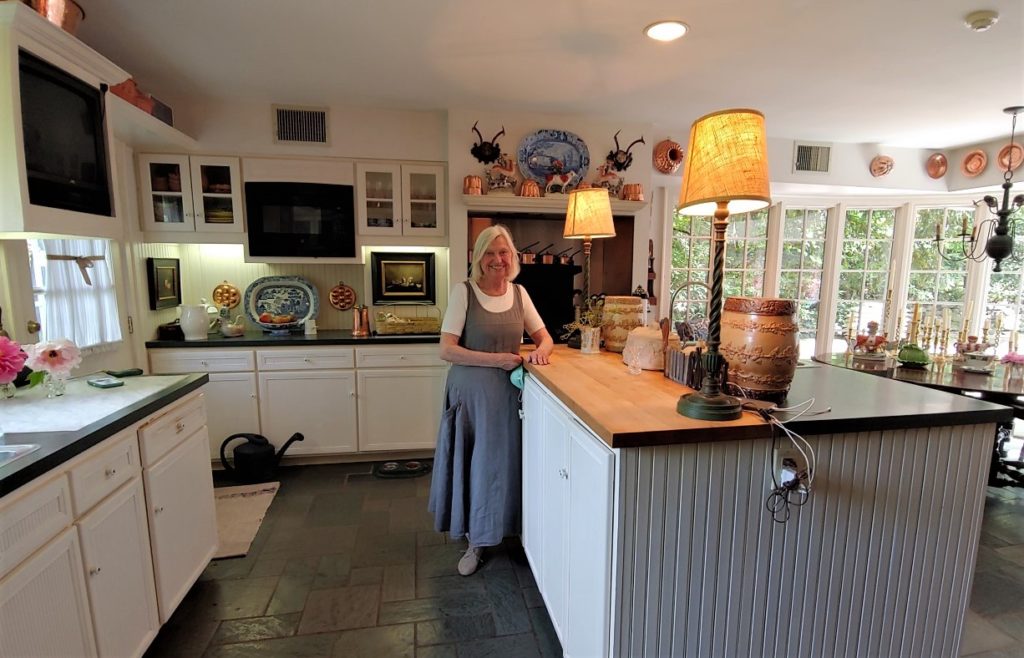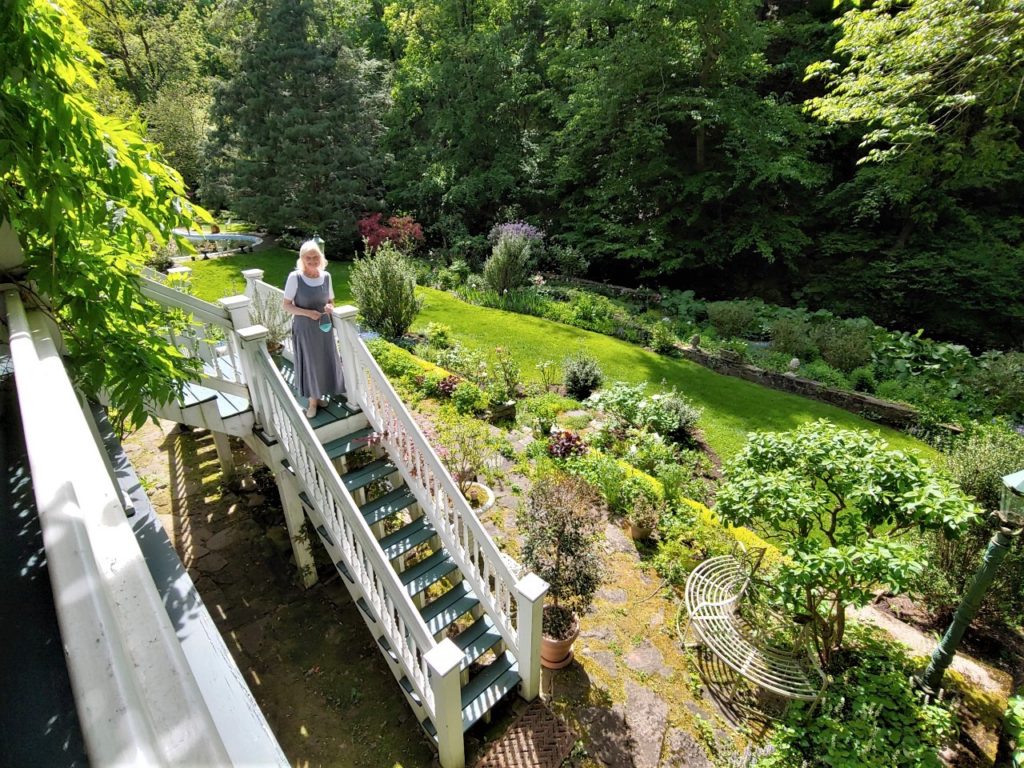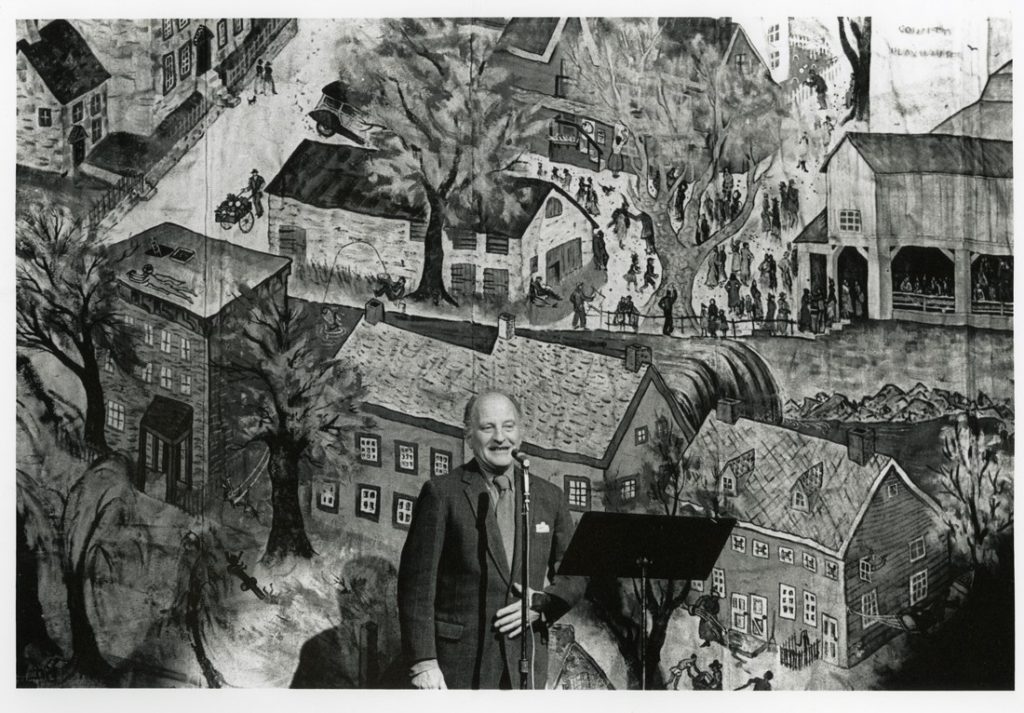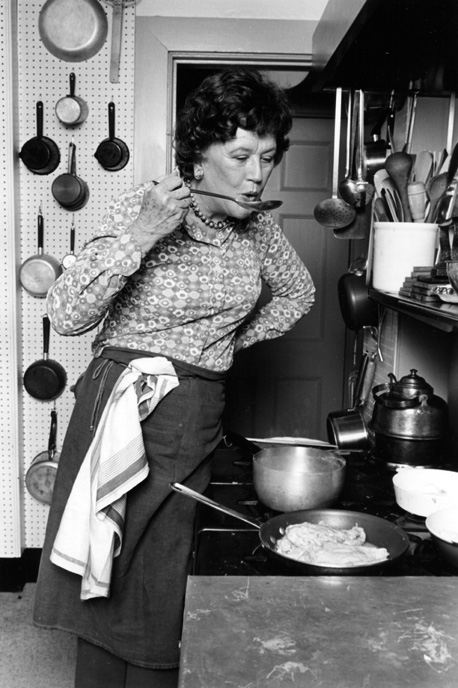TV star Julia Child discovered Bucks after marrying Charlie Child’s brother.
The only thing I wonder is this: Did Charlie Child cook dinner for the famous French Chef whenever she visited Lumberville? That must have been quite a scene.
Charlie’s beguiling personality and artistry made him a popular member of the New Hope art community from the 1930s to the 1960s. In Julia Child’s effervescent presence, he sometimes rolled his eyes when he deemed his sister-in-law too opinionated. “Ohhh, Juuulliaaa!” he’d intone with an exaggerated flourish, making her nervous. “It’s probably really much better not to see one’s intimate family for more than 2-1/2 days at a time,” she confided to her editor.
Regular visits with Charlie were due to close bonds between Julia’s husband Paul and Charlie, twins born in Montclaire, N.J. in 1902. After their father died of typhus when they were six months old, the boys and their mom, a concert singer, moved to Cambridge, Mass. Charlie learned to play violin, Paul cello. They developed a natural rivalry but were supportive of each other.
Charlie seemed the favored twin – intelligent, charismatic and “opted for chaos,” as one biographer put it. Paul was sensitive, a voracious reader who preferred staying in the background. Edward Filene, their mom’s paramour and department store mogul, paid for Charlie’s education at Harvard where he was art editor of “The Harvard Lampoon”. He later spent five years studying art in Paris and Asia. As for Paul, he dropped out of Columbia to travel the world, taking various odd jobs before becoming a tutor. During World War II he joined the U.S. intelligence service which posted him to Sri Lanka. There he met Julia, a clerk typist hoping to be a spy. Back in France, Paul introduced her to cooking and fine wine, putting her on the path to becoming a celebrated chef. The daughter of a prominent Pasadena, Calif. family and graduate of Smith College, Julia was an extrovert and financially well off.

Meanwhile, Charlie had married oil heiress Fredericka “Freddie” Boyles in 1932, giving him the comfort zone to pursue art full time. The couple had three children after acquiring a 3-story stone house on Greenhill Road in Lumberville. The home overlooks expansive primrose gardens, a swift-flowing creek, waterfall and steeply-rising Coppernose Mountain. In September 1946 Charlie and Freddie hosted a wedding reception in their gardens for Julia and Paul. According to Tim and Millena Coffey who now own the house, it was Julia who designed the kitchen and it was Charlie who painted a wrap-around garden mural on the dining room walls. The artist also added a 2-story atrium studio to the home with cabling from the ceiling to suspend large murals in progress.

Former Solebury School assistant headmaster William Berkeley remembers meeting Julia. “When I was a little boy and living in the Childs’ garden cottage with my mom, we went to the Christmas party Charlie and Fredericka held every year. Julia Child — all 5’11” of her — leaned over to me and said ‘Hello, little boy, who are you???’ Well, I was scared to death and immediately disappeared into a nearby bedroom.”
In a letter to her editor in 1953, Julia contrasted Charlie with her husband. “They are absolutely opposites. Charlie is a big talker and energy man, and terribly funny, often quite showy and sometimes needs a kick in the pants.” She added, “He’s a damned good artist and a thoroughly creative fellow.”
Berkeley can attest to his art. “His original painting was replicated in the 1930s on the theater curtain of the Bucks County Playhouse. The painting was of New Hope from the air. There were two versions. One was a ‘typical’ painting of New Hope from an ‘above-the-town’ perspective. The other was the exact same painting on another curtain with a naked woman taking in the sunshine from a rooftop of a New Hope home.”

Charlie financed the New Hope Artists Coop Gallery in the 1940s. For many years, he wrote a weekly column for the New Hope Gazette about travels and the local community. In 1965, he authored “Roots in the Rock” describing how he, Freddie, Julia and Paul built a summer home in Maine. Just about everyone in New Hope knew Charlie and looked to him for inspiration. As Berkeley recalled, “One year Charlie and Paul arranged to have a boxing ring constructed on the lot behind the Logan Inn during the town’s annual street fair. Around the middle of the evening, they entered the ring and performed all sorts of oriental combative moves which the assembled crowd just loved.” Proceeds benefitted the volunteer fire company.
In his declining years, Charlie moved to Pennswood Village in Middletown where he passed away in 1983. Noted Berkeley, “Charlie Child was a colorful, influential guy whose name practically no-one in present-day New Hope would know.” Today a lasting testament is his colorful, 3-panel mural of Pennsylvania’s founding on display in the Doylestown Post Office.
Sources include “The French Chef in America” by Alex Prud’homme published by Random House in 2016; “As Always, Julia: The Letters of Julia Child & Avis Devoto” edited by Joan Rardon and published by Houghton Mifflin Harcourt in 2010; Smithsonian Museum’s description of Charlie Child’s post office mural is on the web at https://postalmuseum.si.edu/indiansatthepostoffice/mural54.html.

